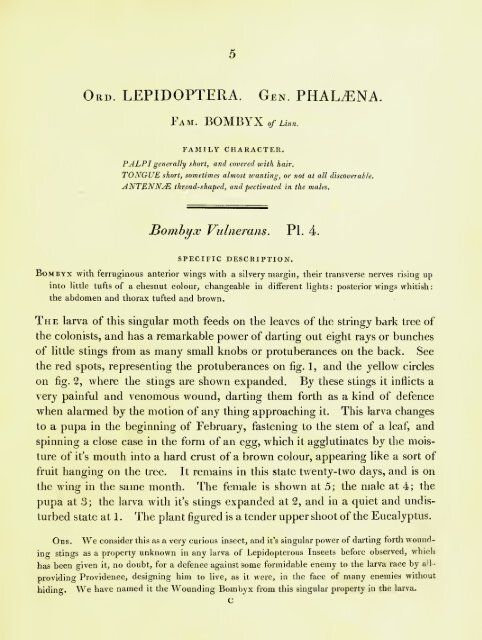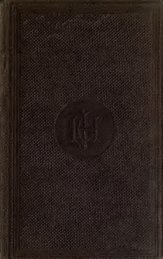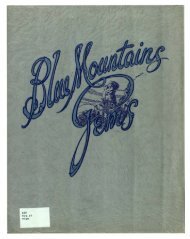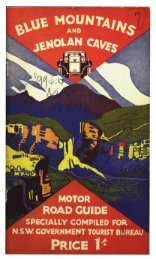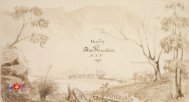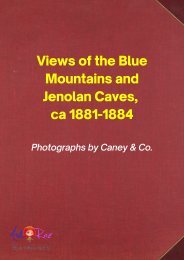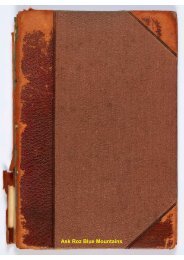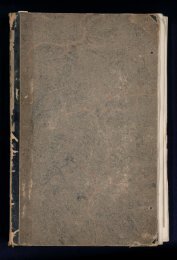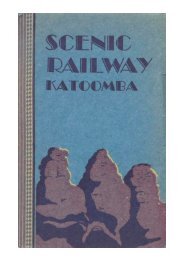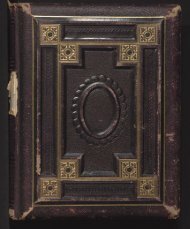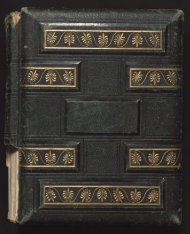A Natural History of Lepidopterous of NSW by John William Lewin
A Natural History of Lepidopterous of NSW by John William Lewin COLLECTED, ENGRAVED, AND FAITHFULLY PAINTED AFTER NATURE JOHN WILLIAM LEWIN, A.L.S. LATE OF PARAMATTA, NEW SOUTH WALES
A Natural History of Lepidopterous of NSW by John William Lewin
COLLECTED, ENGRAVED, AND FAITHFULLY PAINTED AFTER NATURE
JOHN WILLIAM LEWIN, A.L.S. LATE OF PARAMATTA, NEW SOUTH WALES
You also want an ePaper? Increase the reach of your titles
YUMPU automatically turns print PDFs into web optimized ePapers that Google loves.
Ord. LEPIDOPTERA.<br />
Fam. BOMBYX»/l».<br />
FAMILY" CHARACTER.<br />
PALPI generally short, and covered with hair.<br />
Gen. PHAL^NA.<br />
TONGUE short, sometimes almost wanting, or not at all discoverable.<br />
ANTENNAE thread-shaped, and pectinated in the males.<br />
Bom<strong>by</strong>x Vuhierans. Pi. 4.<br />
SPECIFIC DESCRIPTION.<br />
Bom<strong>by</strong>x with ferruginous anterior wings with a silvery margin, their transverse nerves rising up<br />
into little tufts <strong>of</strong> a chesnut colour, changeable in different lights : posterior wings whitish<br />
the abdomen and thorax tufted and brown.<br />
The larva <strong>of</strong> this singular moth feeds on the leaves <strong>of</strong> the stringy bark tree <strong>of</strong><br />
the colonists, and has a remarkable power <strong>of</strong> darting out eight rays or bunches<br />
<strong>of</strong> little stings from as many small knobs or protuberances on the back. See<br />
the red spots, representing the protuberances on fig. 1,<br />
and the yellow circles<br />
on fig. 2, where the stings are shown expanded. By these stings it inflicts a<br />
very painful and venomous wound, darting them forth as a kind <strong>of</strong> defence<br />
when alarmed <strong>by</strong> the motion <strong>of</strong> any thing approaching it. This larva changes<br />
to a pupa in the beginning <strong>of</strong> February, fastening to the stem <strong>of</strong> a leaf,<br />
spinning a close case in the form <strong>of</strong> an egg, which it agglutinates <strong>by</strong> the moisture<br />
<strong>of</strong> it's mouth into a hard crust <strong>of</strong> a brown colour, appearing like a sort <strong>of</strong><br />
fruit hanging on the tree. It remains in this state twenty-two days, and is on<br />
the wing in the same month. The female is shown at 5; the male at 4; the<br />
pupa at 3; the larva with it's stings expanded at 2, and in a quiet and undisturbed<br />
state at 1. The plant figured is a tender upper shoot <strong>of</strong> the Eucalyptus.<br />
Obs. We consider this as a very curious insect, and it's singular power <strong>of</strong> darting forth wounding<br />
stings as a property unknown in any larva <strong>of</strong> <strong>Lepidopterous</strong> Insects before observed, which<br />
has been given it, no doubt, for a defence against some formidable enemy to the larva race <strong>by</strong> a'lproviding<br />
Providence, designing him to live, as it were, in the face <strong>of</strong> many enemies without<br />
hiding. We have named it the Wounding Bom<strong>by</strong>x from this singular property in the larva.<br />
and


